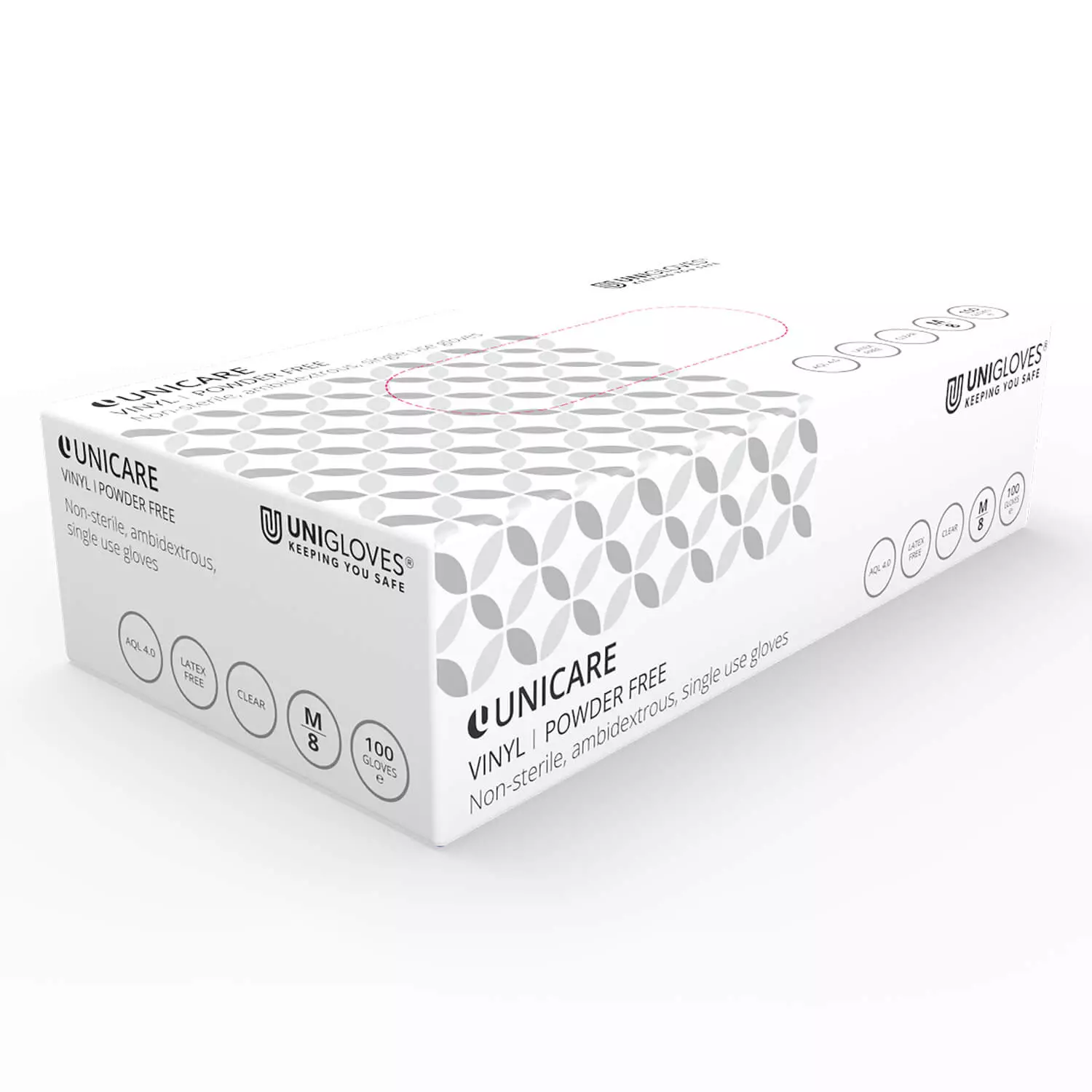
Product description
• AQL 1.5 and EN455 parts 1-4
• Free from latex and accelerators
• Free from powder
• Tested to EN1186
• Ambidextrous
• Manufactured using high-quality vinyl
• Beaded cuff
• Medium-weight construction
• Touchscreen compatible
About Disposable Vinyl Gloves
Disposable Vinyl Gloves are latex-free hand coverings ideal for food handling, cleaning, and basic medical tasks. Offering economical protection against cross-contamination, these single-use gloves provide a comfortable fit while ensuring hygiene in various professional and household settings.
- Clean Room
- Food Service
- Medical Protection
- Antimicrobial Protection
- Hand Protection
Standards and labels
Unigloves delivery terms
Free delivery when you order more than 80,00 € from Unigloves
Supplier shipping fee 7,95 €
Brand minimum 1 250,00 €
Unigloves
Unicare Clear vinyl gloves, 10 x 100 pcs
Unicare Clear vinyl gloves, 10 x 100 pcs
(15)
29,45 €
Price per 10 packages (1 000 pcs)
2,95 € / 100 pcs
Shipping fee is 7,95 € for orders under 80,00 €